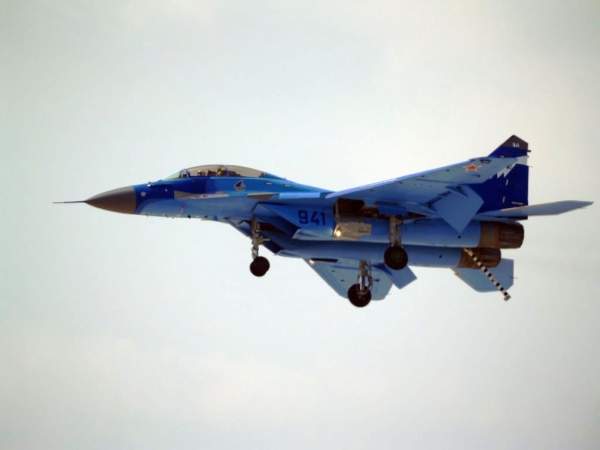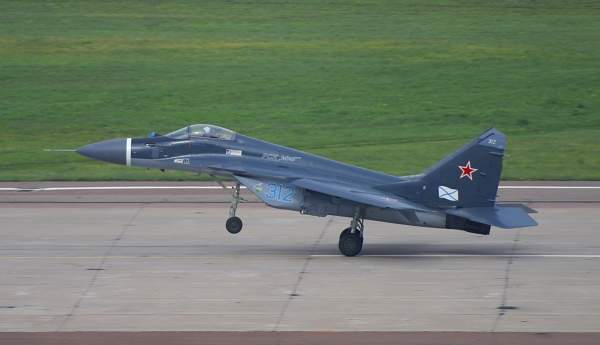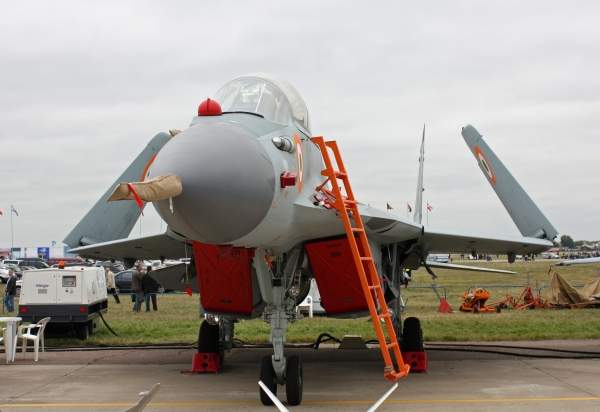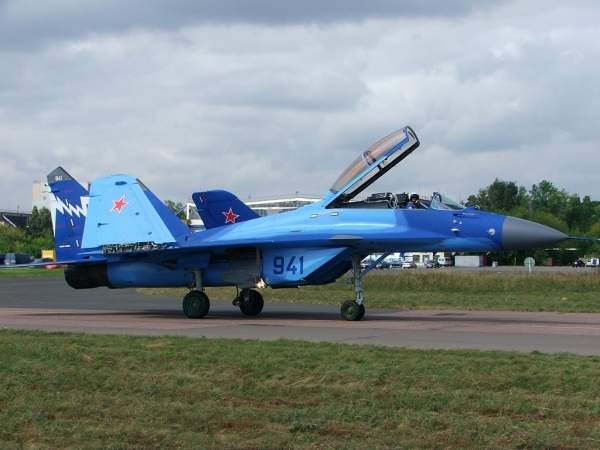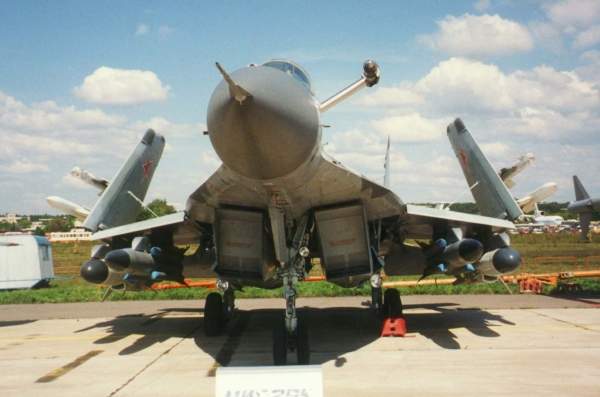MiG-29K is an all-weather carrier-based multirole fighter aircraft being produced by Russian Aircraft Corporation MiG (RAC MiG). The aircraft is also offered in a two-seat operational trainer variation known as the MiG-29KUB.
The MiG-29K/KUB aircraft are designed to operate from aircraft-carriers with a minimum displacement of 28,000t and airfields.
The aircraft has a length of 17.3m, height of 4.4m and a wingspan of 11.9m. The maximum take-off weight is 24,500kg.
Orders and deliveries of the Russian MiG-29K
In January 2004, India placed an order for 12 MiG-29K single-seat and four MiG-29KUB two-seat fighters. Deliveries of the aircraft began in December 2009. Six aircraft were delivered by the end of 2010. The MiG-29K entered operational service with Indian Navy in February 2010.
In March 2010, India signed a $1.5bn contract with Russia for an additional 29 MiG-29Ks. Deliveries are expected to start in 2012.
In May 2011, five MiG-29K / KUBs and a flight simulator were delivered to the Indian Navy under the first contract, with further deliveries planned through 2011. The fighters will be based on the aircraft carrier INS Vikramaditya. The Vikramaditya is expected to carry up to 24 MiG-29K/KUB fighters. The Vikrant Class future indigenous aircraft carrier currently being built by India will also accommodate the MiG-29K/KUB aircraft.
The Russian Navy ordered 24 MiG-29Ks in late 2009 for Kuznetsov Class heavy aircraft carrying cruiser. Deliveries of the MiG-29K for the Russian Navy began in 2010.
On 23 June 2011, a MiG-29KUB of the Indian Navy crashed during a flight test in Astrakhan region, Russia. The crash, which occurred due to pilot’s error, killed both the pilots on board. In August 2011, RAC MiG however announced the deliveries will be made as per the schedule.
MiG-29K development history
The MiG-29K project was initiated in the late 1970s to meet the requirements of the Soviet Navy for a supersonic carrier-based fighter. The first proof of concept version, MiG-29KVP, was developed based on the MiG-29M.
The MiG-29KVP completed its maiden flight in August 1982. The aircraft with new undercarriage and folding wings of greater area, differed from the MiG-29 production model.
The first MiG-29K took to the skies on 23 July 1988. The aircraft performed its first carrier landing on the aircraft-carrying cruiser Tbilisi (now Admiral Kuznetsov) on 1 November 1989. The project was halted due to the dissolution of the Soviet Union. Mikoyan continued the development and struggled with funding issues until it received orders from India. The MiG-29KUB aircraft completed its first flight in January 2007.
MiG-29K design features
The MiG-29K features a strengthened airframe and undercarriage suitable for landing on aircraft carriers. The airframe is made of about 15% composite materials. The aircraft is fitted with folding wings, arrestor hook and a catapult for carrier operations. The radar signature of the aircraft is reduced by four to five times over the basic MiG-29.
The MiG-29K is fitted with more powerful RD-33MK engines, replacing the RD-33K turbofan engines used in the early prototypes. The flight hours of the fighter are doubled, but the flight hour cost is reduced by about 2.5 times. The aircraft can operate without overhaul.
The single and double seat variations feature the same airborne equipment and weapons. The MiG-29KUB two-seat fighter is primarily intended for pilot training, but can also conduct combat missions similar to the single-seat fighter.
The glass cockpit of the MiG-29K aircraft accommodates one pilot. It is equipped with three multifunctional colour LCDs, a digital fly-by-wire flight control system and TopOwl helmet-mounted targeting system.
MiG-29K avionics systems
The airborne avionics based on open architecture are classified under MIL-STD-1553B standard. The open architecture allows the installation of new equipment and weapons according to customer requirements.
The fighter has multirole, multimode Zhuk-ME pulse doppler radar from Fazotron-NIIP Corporation. The radar with the slot array has wider scanning angle and longer target detection range. Zhuk-ME can track up to ten air targets while engaging four targets simultaneously.
The MiG-29K/KUB fighters have multichannel infra-red search and track (IRST) system with target designation system. The aircraft can also be installed with IR and laser sighting devices for ground targets illumination.
Weapon systems on the Russian-built MiG-29K carrier-based multirole fighter
MiG-29K is armed with RVV-AE and R-73E air-to-air missiles, Kh-31A and Kh-35E anti-ship missiles and Kh-31P anti-radar missiles. Other armaments include guided aerial bombs, rockets and aerial bombs.
The aircraft is mounted with a 30mm GSh-30-1 cannon with 100 rounds. A wide range of weapons can be added upon the request of the customer.
MiG-29K/KUB is the only ship-borne fighter in the world to fire Kh-31A supersonic anti-ship missiles resistant to air-defence.
The MiG-29K is powered by two RD-33MK engines equipped with smokeless combustion chamber and new full authority digital engine control (FADEC) system.
The power plant provides a ferry range of 2,000km. The range can be increased to 3,000km with three underwing fuel drop tanks.
The Global Military Aircraft Market 2011-2021
This project forms part of our recent analysis and forecasts of the global Military Aircraft market available from our business information platform Strategic Defence Intelligence. For more information click here or contact us: EMEA: +44 20 7936 6783; Americas: +1 415 439 4914; Asia Pacific: +61 2 9947 9709 or via email.

